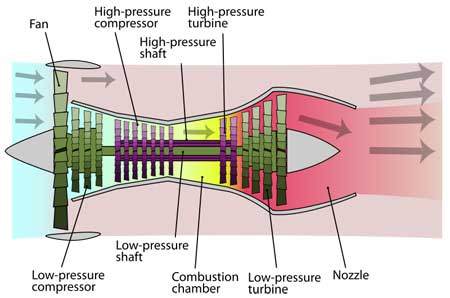Air on a plane - stepping outside one's area of expertise
Bad science here -- from Portland, OR station
KATU:
UW research: you�re breathing toxic air on a plane
New research from the University of Washington could back a Washington woman�s claim that the air she was exposed to inside planes made her sick.
Terry Williams was a former flight attendant who is plagued by tremors and migraines. She said it all began when she saw smoke blowing through a vent on an MD-82, which is made by Boeing-owned McDonnell Douglas.
Half of the air on passenger planes is "bleed air", which comes through jet engines.
University of Washington researchers said toxic air can get into plane cabins.
�There�s a danger of inhaling compounds that are coming out of the engine,� said University of Washington professor Clement Furlong. �The engine seals fail and there�s very potent toxins that can come on board when the engine seals fail.�
A British study said about two dozen pilots who complained of being exposed to contaminated air did have neurological problems.
Doctors said if certain proteins are present in someone�s body, they can make the toxins more potent.
Boeing said the air on its planes is safe.
First of all, Dr. Furlong's area of expertise -- from the
UW Website:
Clement Furlong
Research Professor of Genome Sciences and of Medicine
One of the main questions addressed in Dr. Furlong's laboratory is the genetic variability of insecticide metabolism and sensitivity in humans. His research group has cloned and sequenced the cDNA's from humans, rabbits, and mice that encode paraoxonase (PON1) an HDL-associated enzyme that inactivates the toxic metabolites of several toxic organophosphate pesticides and nerve agents. The molecular basis of the genetic polymorphism in humans that specifies high or low metabolism has been identified. Dr. Furlong has worked closely with Dr. Lucio Costa in developing a mouse model that has provided valuable information on the role of PON1 in protecting against insecticide exposure.
A Geneticist and he is talking about seals on jet aircraft? Of course, there are
other geneticists who are going off on wilder tangents without understanding what they are talking about but...
A turbofan engine is a wonderfully simple device:

Image taken from this WikiPedia article:
Turbofan
Note that there is significant airflow around the combustion chamber as well as through it. The bleed air comes from here. If there was a contaminant in it, it is not from the exhaust as the flow through the turbofan is up in the 600MPH range, if the contaminant was anything else, it would be the lubricating oil that is being circulated through the bearings. If lubricating oil was entering the bleed air, it would mean that there was a bearing failure and that the engine would be shut down.
The bleed air comes out at about 40PSI and is compressed -- work has been done to compress it and when that happens, it heats and absorbs more moisture from the atmosphere.
When the air pressure is lowered and it is injected into the cabin, that cooling causes the moisture to precipitate out in the form of water vapor or cool steam.
This is what Ms. Williams was seeing. I would suspect that the illnesses she is suffering will have a different cause, either psychosomatic or a different medical condition than smoke on a plane...
Posted by DaveH at August 19, 2009 6:20 PM
